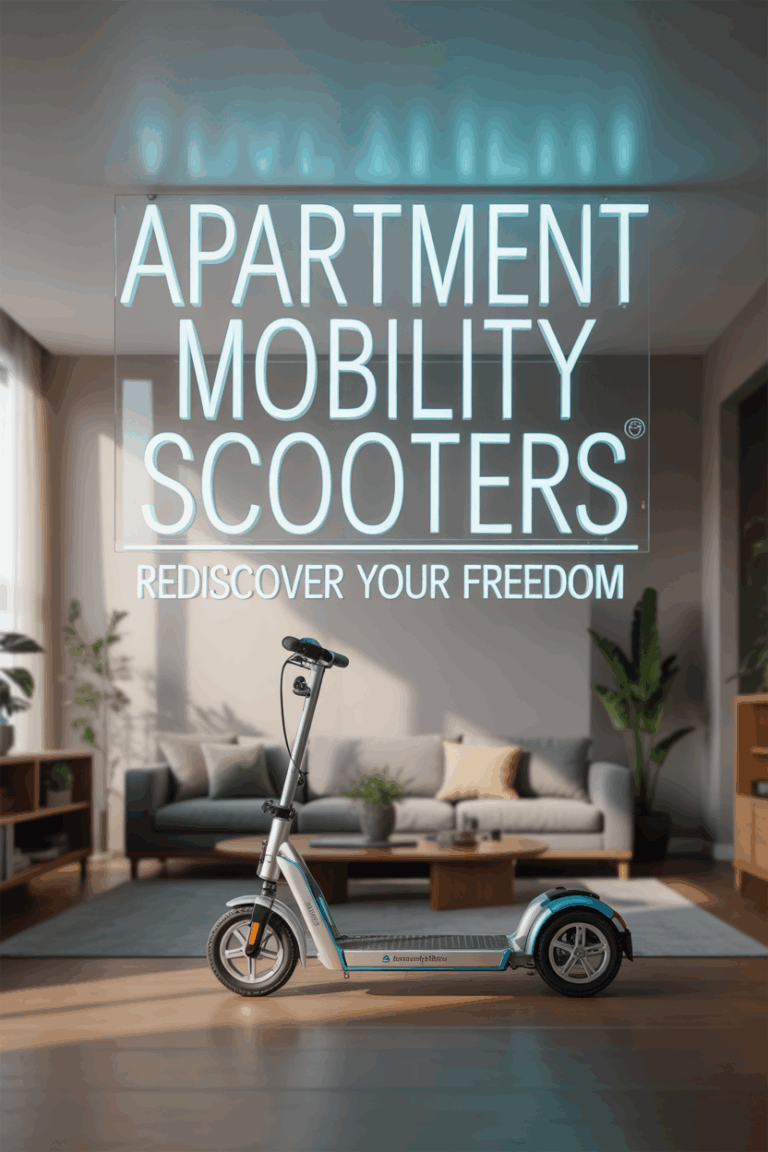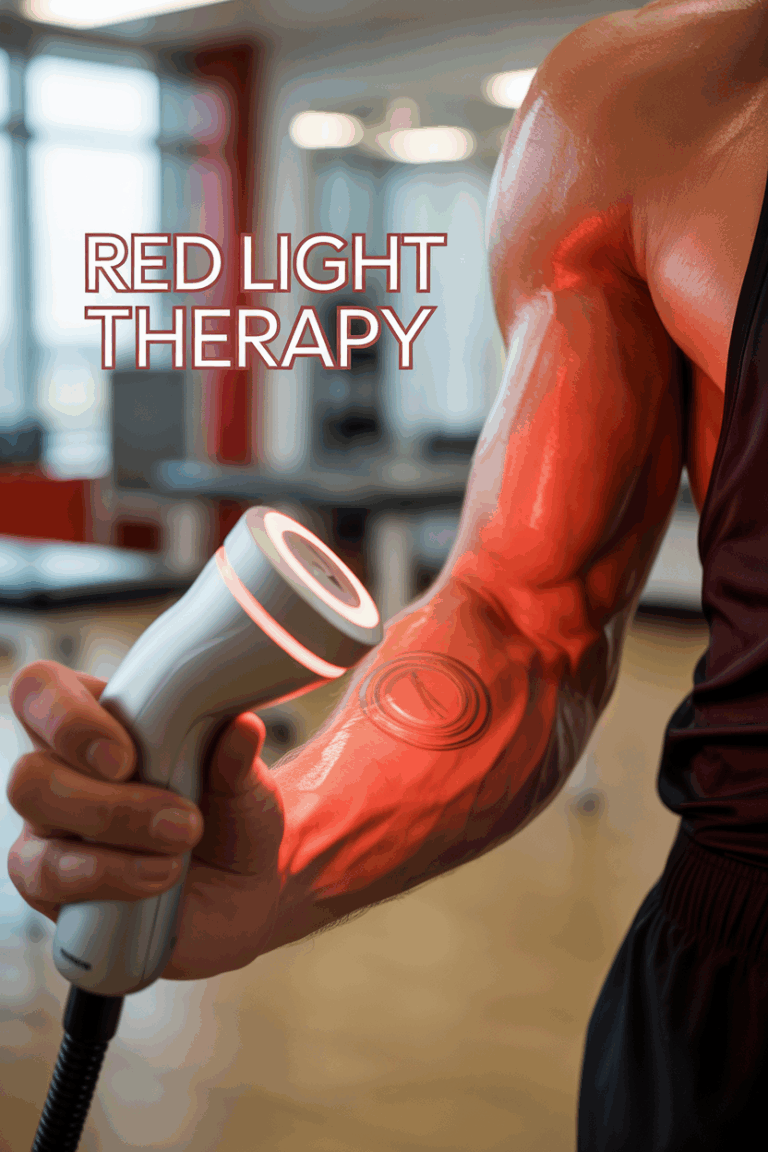Heavy Duty Mobility Scooter for Obese Adults: 7+ Facts (for Smart Buyers)

Your Guide to Finding the Perfect Bariatric Mobility Scooter
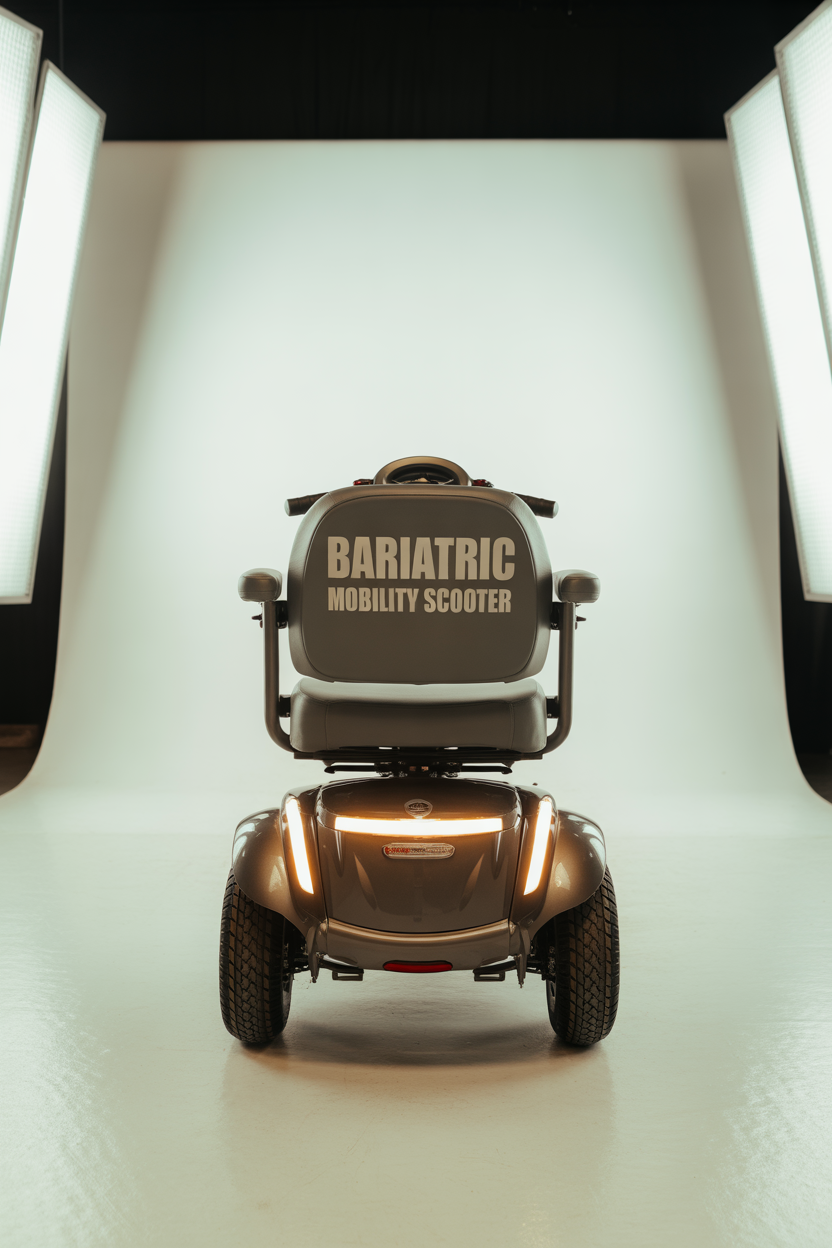
Shopping for a mobility scooter when you’re a larger person can feel overwhelming, but with the right information, you can find the perfect ride that’ll have you moving with confidence.
A bariatric mobility scooter isn’t just a regular scooter with a fancy name. These are specially engineered devices built from the ground up with reinforced components.
Think of them as the superhero version of mobility scooters. They feature beefed-up frames, wider seats for actual comfort, and components designed to handle extra weight safely.
While average mobility scooters might support 250-300 pounds, bariatric models are overachievers, happily supporting 400-700 pounds without compromising performance.
It’s not just about carrying more weight. It’s about doing it safely, comfortably, and reliably for years to come.
When you invest in a proper bariatric mobility scooter, you’re buying yourself freedom and peace of mind. A scooter not built for your weight is like wearing shoes three sizes too small.
Nobody wants to be stranded because their scooter decided to quit in the middle of an important outing. Quality matters when your independence depends on it.
How Do I Determine the Right Weight Capacity for My Scooter?
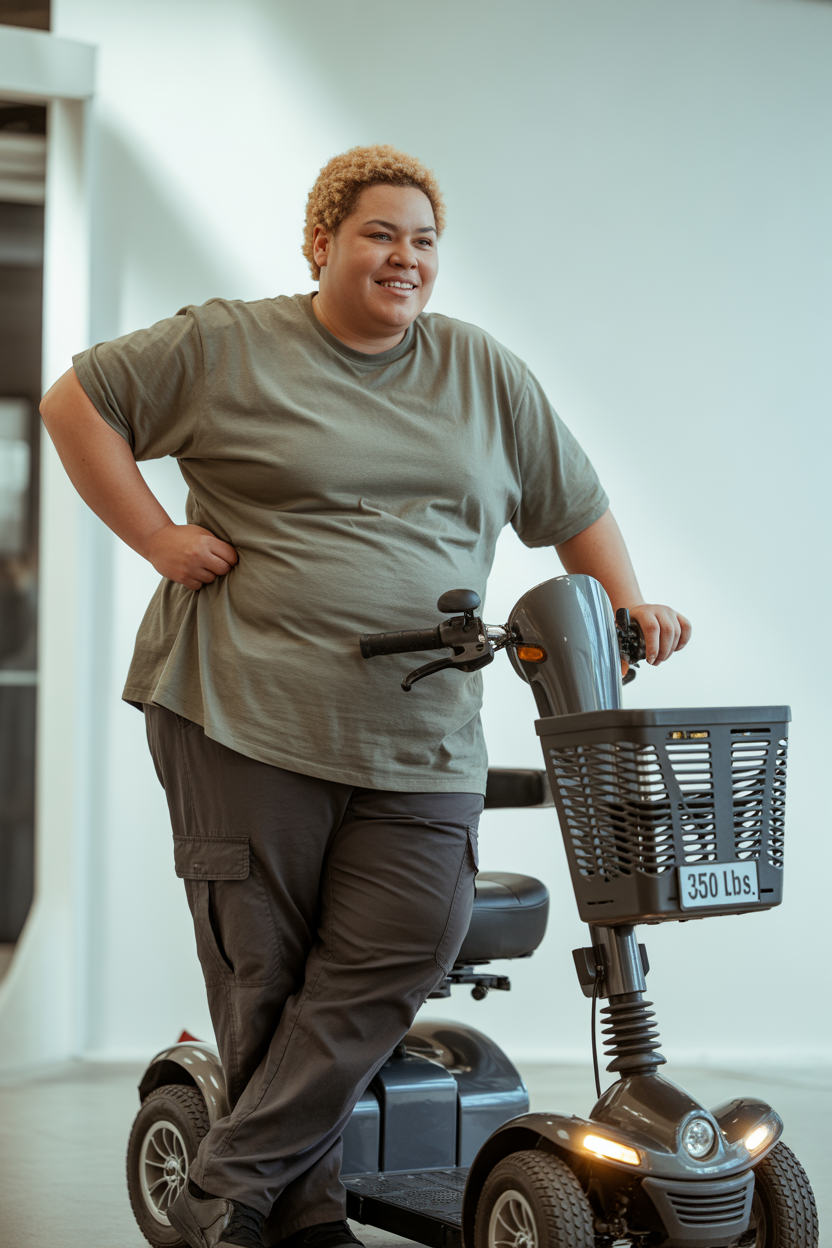
Here’s the golden rule for scooter shopping: add 10-20% to your body weight to find your minimum scooter capacity sweet spot.
If you weigh 400 pounds, don’t consider that 400-pound capacity scooter. That’s like filling your gas tank to the brim and expecting no spillage when you hit a pothole.
Instead, look for something that can handle at least 440-480 pounds, though 500 or more would be ideal. This isn’t just about safety margins, though those are important.
It’s about giving your scooter room to perform like the champion it was designed to be. When a scooter operates near its weight limit, everything works harder and wears out faster.
The motor struggles, the battery drains quicker, and the whole system ages prematurely. Choose a model with capacity well above your weight for lasting reliability.
This approach ensures your investment will serve you well for years, maintaining performance and safety throughout its lifespan.
What Seat Features Should I Look for in a Bariatric Scooter?

Your scooter seat is essentially your throne, and it better treat you right. Look for bariatric scooter seats between 22-30 inches wide.
This isn’t just about having enough room to sit comfortably. It’s about preventing pressure points that can turn a pleasant ride into an endurance test.
The real engineering happens underneath that cushioned seat. Bariatric mobility scooter seats have reinforced frames designed to handle serious business.
You might not see all this structural muscle, but you’ll definitely feel the rock-solid stability when you’re cruising around town.
Quality cushioning is crucial for long-term comfort. Look for pressure-relieving foam or gel cushioning that supports your body properly.
This isn’t just about immediate comfort. It’s about maintaining proper blood flow and preventing that pins-and-needles feeling during extended use.
Adjustable armrests that flip up are terrific for transfers. These features make getting on and off your scooter smooth and safe.
No more awkward maneuvering or challenging transfer attempts. Just flip those armrests out of the way and slide on with confidence.
Which Advanced Seat Features Are Worth the Investment?
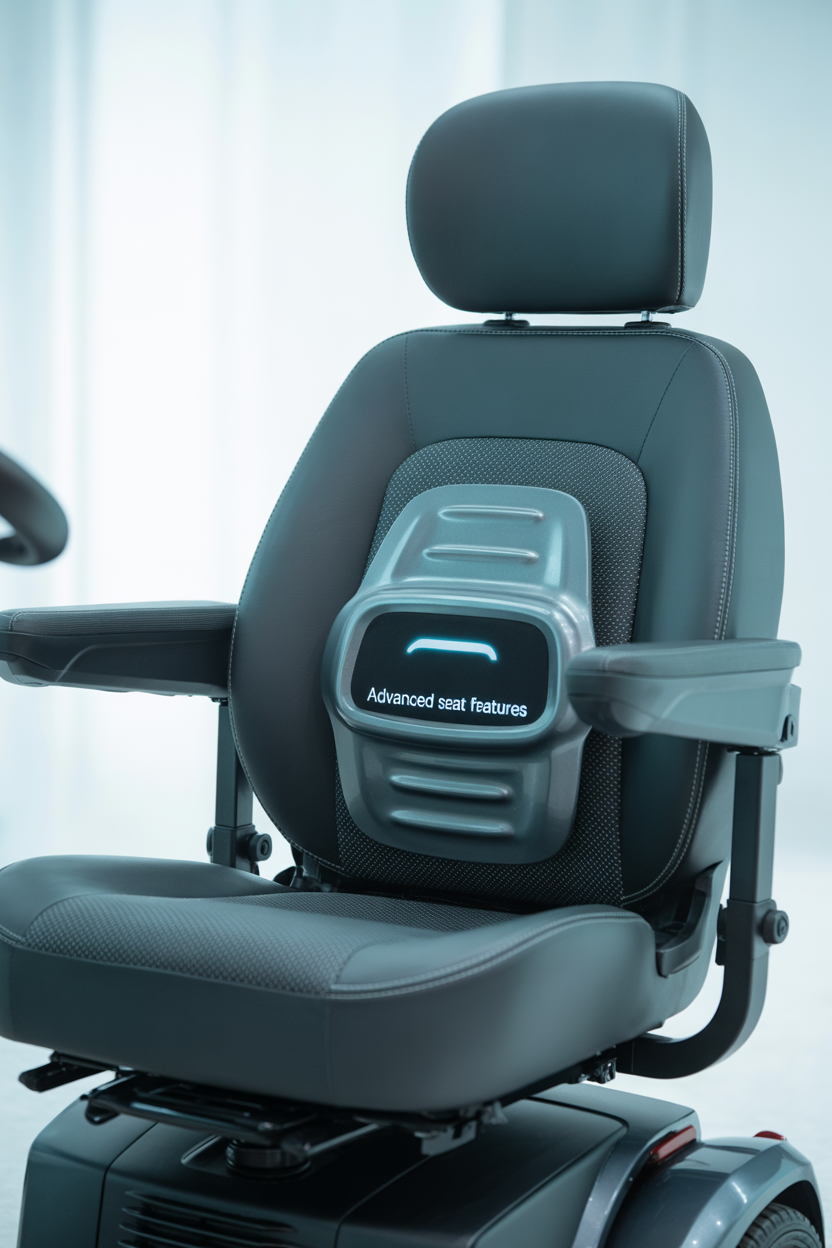
Swivel functionality allows seats to rotate up to 180 degrees, acting like a personal assistant for transfers. Instead of complicated maneuvering around your scooter, you simply turn the seat toward you.
Plop down comfortably, then swivel back to face forward. It’s a smooth, dignified way to mount and dismount your mobility device.
Reclining capabilities might sound luxurious, but they’re actually wellness features in disguise. Being able to adjust your position helps your lower back stay comfortable.
This is especially valuable during longer outings or if your back needs positional changes during extended sitting sessions.
Integrated lumbar support keeps your spine properly aligned and prevents fatigue. Good lumbar support is like having built-in posture assistance.
Some bariatric models offer adjustable lumbar support, allowing you to dial in exactly what your back needs to stay comfortable.
Breathable upholstery materials are unsung heroes of comfortable riding. These fabrics allow air flow, preventing overheating and sticky sensations.
Plus, they’re usually easier to clean and maintain, which adds practical value to your investment.
Why Should I Choose Four Wheels Over Three?
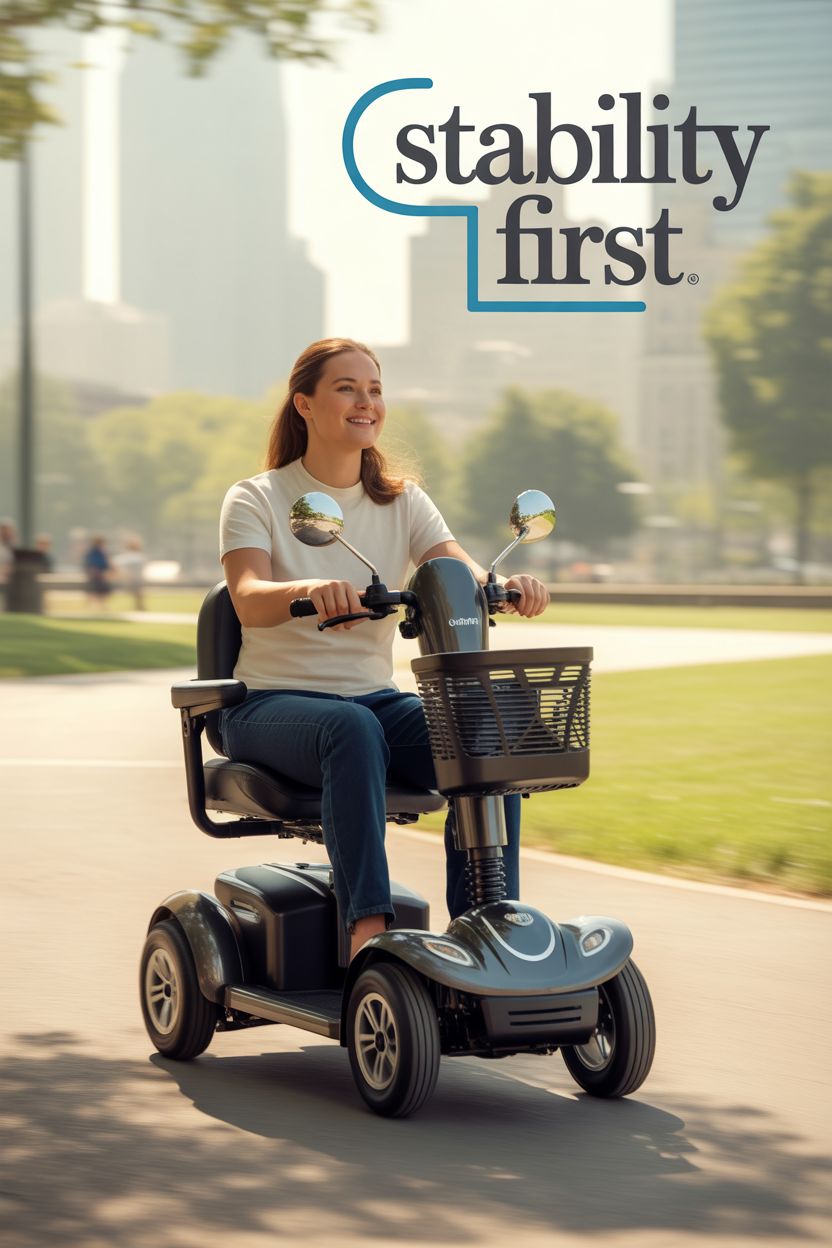
When it comes to stability for heavier users, four wheels absolutely outperform three wheels in the safety department. Four-wheel bariatric models with widely-placed wheels provide a solid foundation.
The wheels should sit wide and stable, not clustered together underneath. This wide stance creates better balance and resistance to tipping.
Three-wheel designs are inherently less stable, like trying to balance on a bar stool. That single front wheel has no backup support.
This makes the whole scooter more prone to tipping and unpredictable behavior. Even with anti-tip wheels, three-wheelers can’t match four-wheel stability.
Look for wheels that are at least 10 inches in diameter. Larger wheels roll over obstacles more easily and provide better traction.
They also spread your weight over a larger area, reducing pressure on any single point of contact with the ground.
The tread pattern on your wheels affects traction on various surfaces. Good tread provides grip on everything from smooth concrete to gravel paths.
Deep patterns help prevent slipping on wet surfaces or slight inclines, keeping you safely connected to the ground.
What Type of Tires Work Best for Bariatric Scooters?
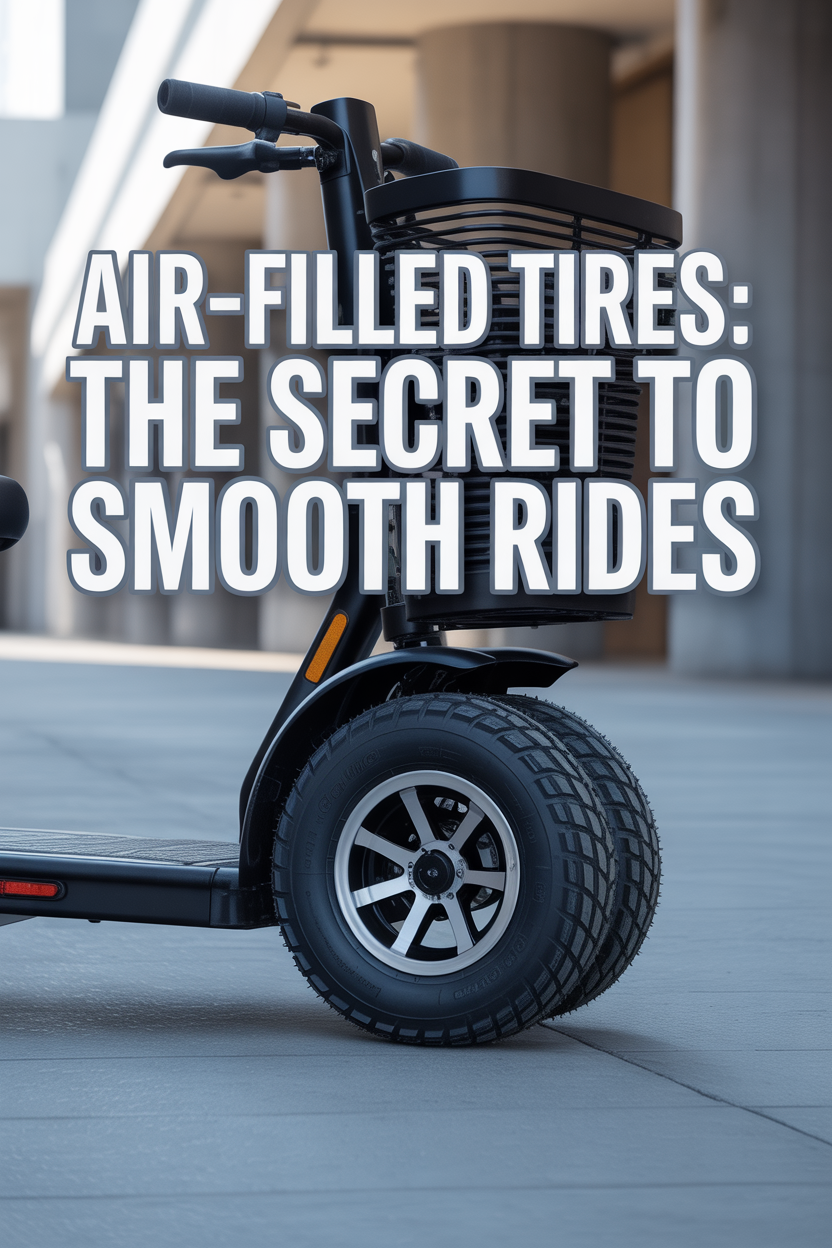
Air-filled tires function like built-in shock absorbers, making every ride smoother and more comfortable. They cushion you over bumps and uneven surfaces.
This reduces jarring vibrations that can turn a pleasant cruise into an uncomfortable experience. Think luxury car versus rickety wagon.
Larger tires provide more ground contact, translating to better traction and stability. This is especially important when handling additional weight.
Extra contact area distributes weight more evenly, reducing stress on your scooter’s frame and components for longer life.
Air-filled tires can conform slightly to ground surfaces, providing better grip in different conditions. This adaptability is crucial for maintaining balance.
The air cushion helps your tires “float” better on soft surfaces like grass or gravel, expanding your adventure possibilities.
Solid tires might seem maintenance-free, but they transmit every bump and vibration directly to your body. Air-filled tires are worth the minimal maintenance.
The comfort difference is substantial, especially during longer rides or when traversing less-than-perfect surfaces.
How Much Motor Power Do I Really Need?
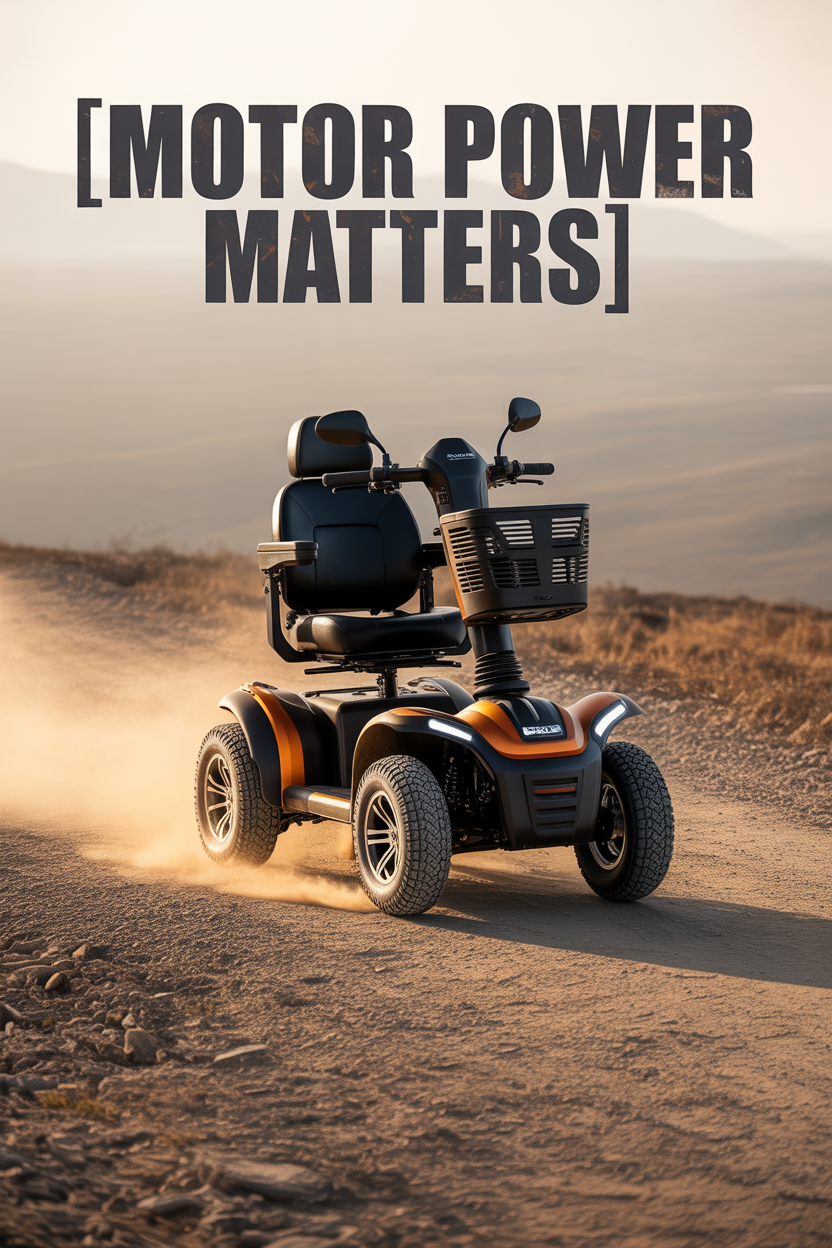
For heavier users, motor power isn’t about speed competitions. It’s about having sufficient strength to handle increased weight without strain.
Look for motors rated at 500+ watts minimum. This extra power ensures your scooter tackles hills and rough terrain confidently.
Adequate motor strength prevents overheating, excessive battery drain, and premature wear. An underpowered motor will struggle and age quickly.
It’s the difference between a scooter that confidently cruises versus one that sounds like it’s having respiratory issues.
Dual motor options provide enhanced power and better traction. With two motors sharing the load, you get superior performance on challenging terrain.
This is especially valuable if you live in hilly areas or plan off-road adventures on grass or gravel surfaces.
Motor strength affects your entire scooter experience. Invest in adequate power, and you’ll have a device that performs reliably for years.
Remember, your motor needs to handle not just your weight, but also any cargo, groceries, or accessories you might carry.
What Should I Expect for Battery Life and Range?
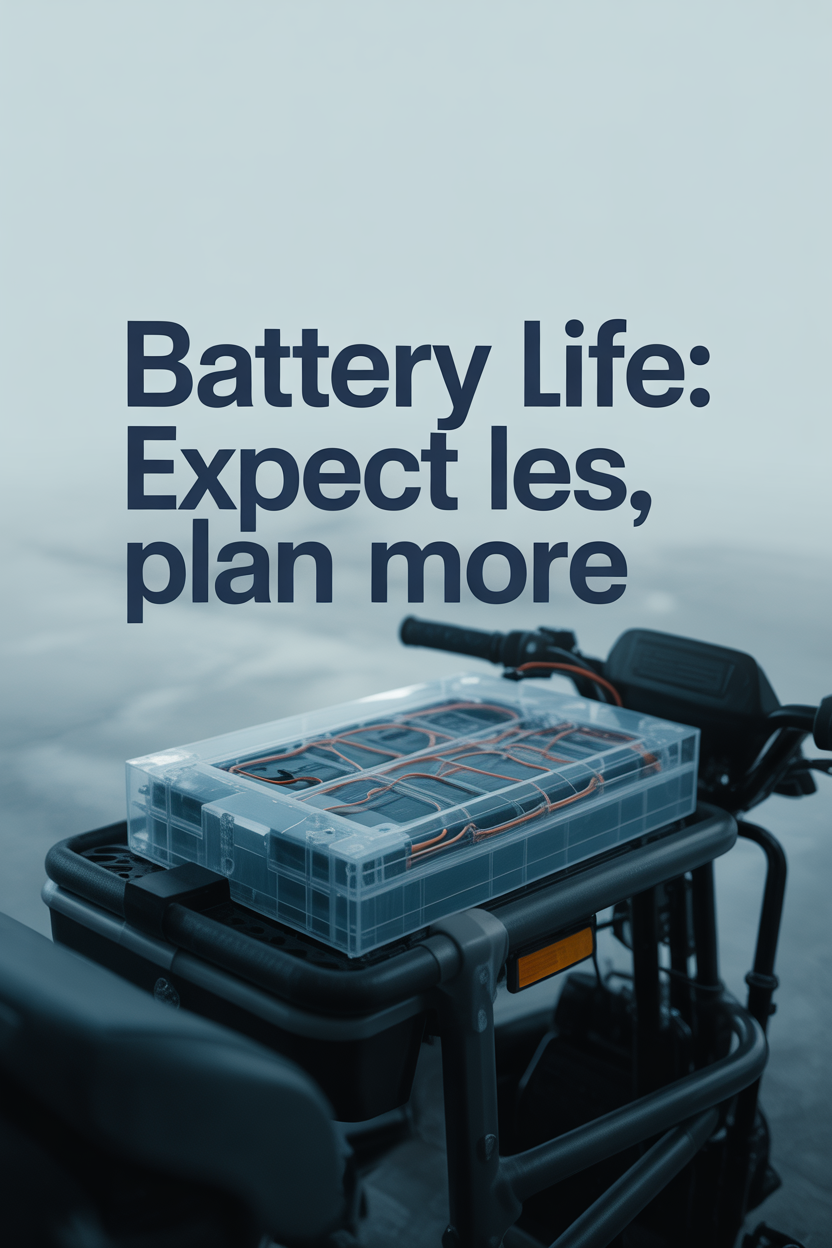
Let’s discuss battery range reality. Manufacturer claims are tested under perfect conditions with lighter weights and ideal terrain.
Your actual range will be less than advertised, especially with heavier weight and real-world conditions like hills and rough surfaces.
Look for scooters offering at least 15-20 miles of advertised range minimum. This provides breathing room for most daily activities.
Remember, batteries age and lose capacity over time. Having extra range when new ensures adequate performance as your battery matures.
Removable batteries offer tremendous convenience, especially if you can’t park your scooter near charging outlets. They’re perfect for apartment dwellers.
Having the option to carry a backup battery can make your scooter perfect for all-day adventure for extended outings.
Consider your typical usage patterns when evaluating battery needs. Factor in round trips, multiple stops, and potential detours.
It’s better to have more range than you think you need than to find yourself stranded with a dead battery.
Why Does Suspension Matter for Comfort?
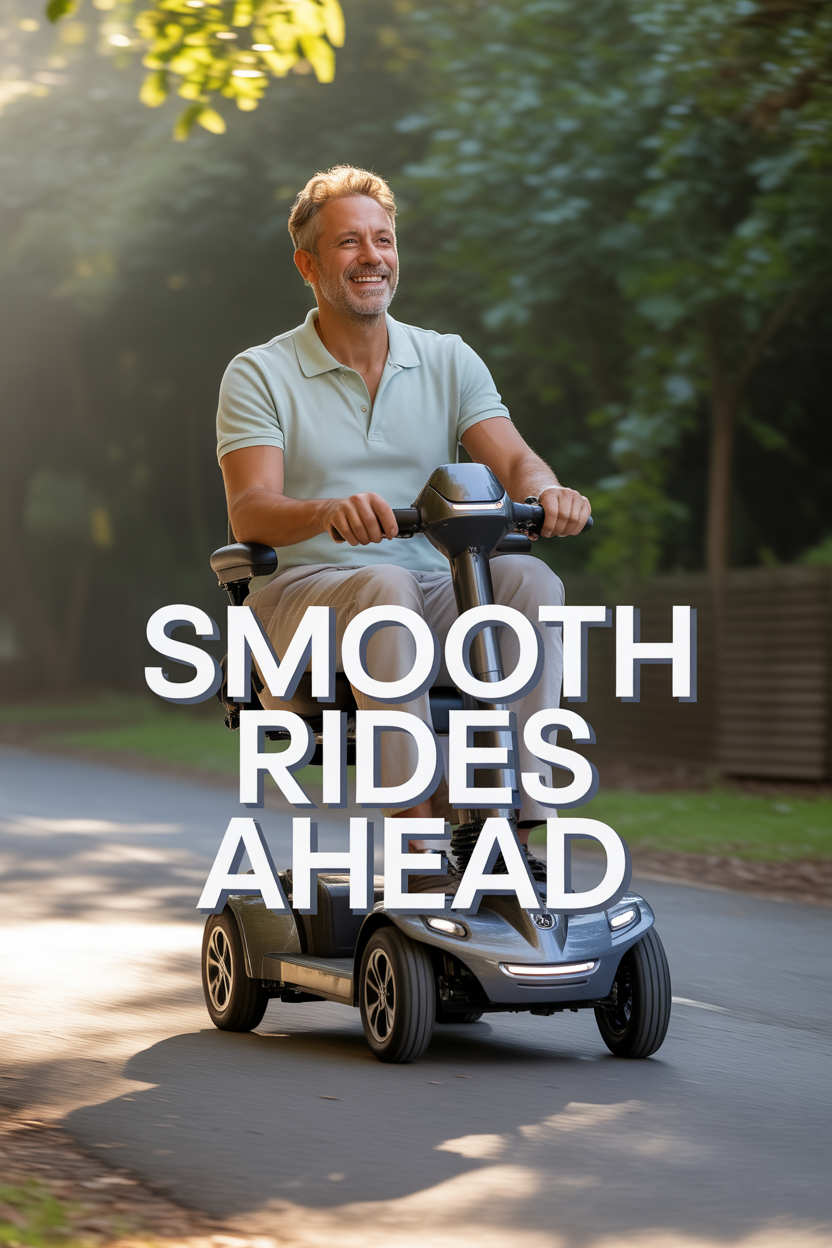
A quality suspension system absorbs shocks and vibrations from bumps and uneven surfaces. It maintains smooth rides that are easier on your body.
Without suspension, every crack in the pavement becomes a jarring experience. Your joints and back will definitely notice the difference.
Suspension is especially important for maintaining balance over uneven ground. It acts like a built-in stabilizer that smooths rough patches.
When your scooter absorbs impacts instead of bouncing over them, staying balanced becomes effortless and natural.
Full suspension systems work beautifully with air-filled tires for the ultimate comfort combination. This dynamic duo creates exceptionally smooth rides.
The difference is like riding on clouds versus riding a paint mixer. Clouds are definitely the superior experience.
Quality suspension encourages longer rides and more frequent use. When comfort isn’t an issue, you’re more likely to maintain active independence.
This supports your overall wellness goals and helps preserve your mobility and freedom long-term.
How Does Center of Gravity Affect Scooter Safety?
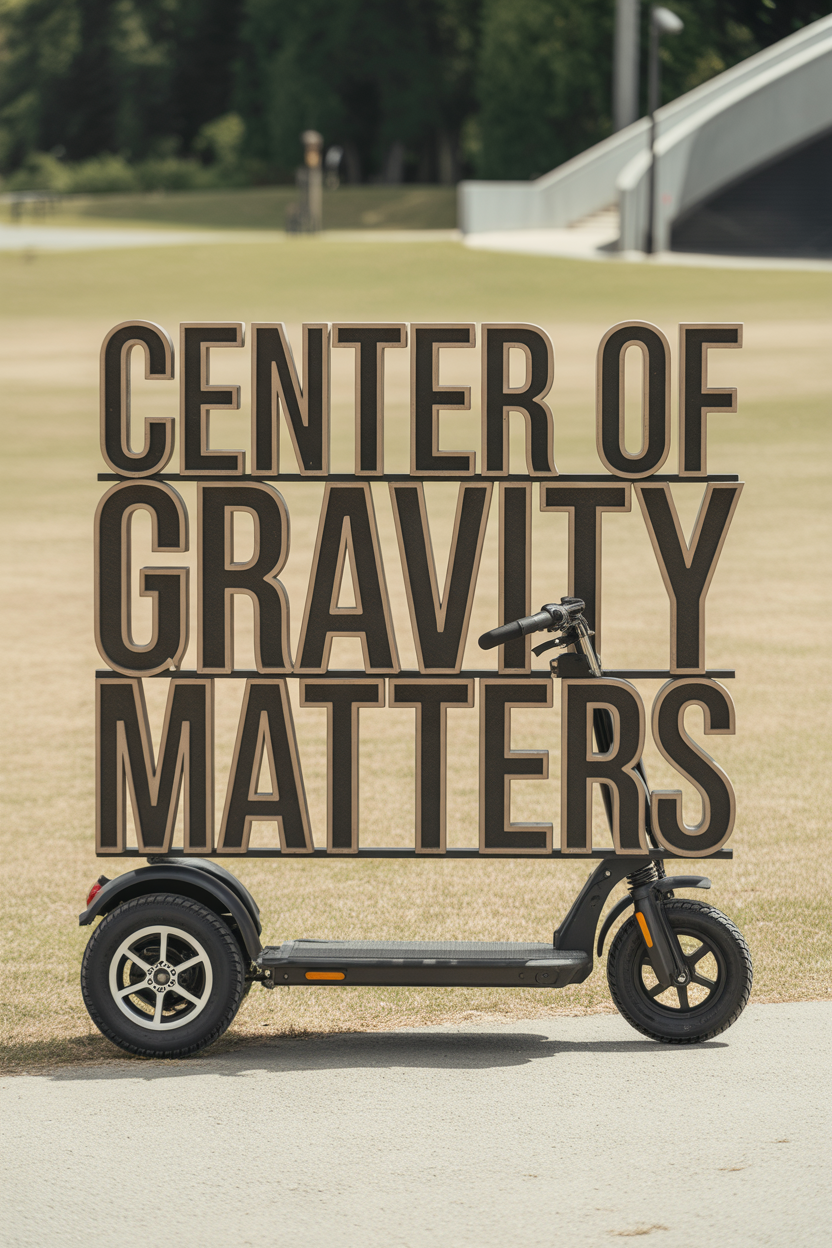
A low center of gravity is absolutely crucial for stability, but not all bariatric scooters understand this principle. Some models position seats too high.
High seat positions can turn your scooter into a tipping hazard. Look for designs that keep things low and stable.
The physics are simple: the lower your center of gravity, the more stable you’ll be. Race cars hug the ground for this exact reason.
Well-designed bariatric scooters with low centers of gravity resist tipping during turns, on inclines, or over uneven terrain.
Avoid models with excessively high seats unless you specifically need extra height for transfers. Height compromises stability unnecessarily.
The best bariatric scooters find the sweet spot between comfort and safety, providing adequate seat height without sacrificing stability.
Wide wheelbase designs contribute significantly to overall stability. Look for scooters where the wheels are positioned far apart.
This creates a stable platform that resists tipping and provides confident handling in various conditions.
What Safety Features Are Absolutely Essential?
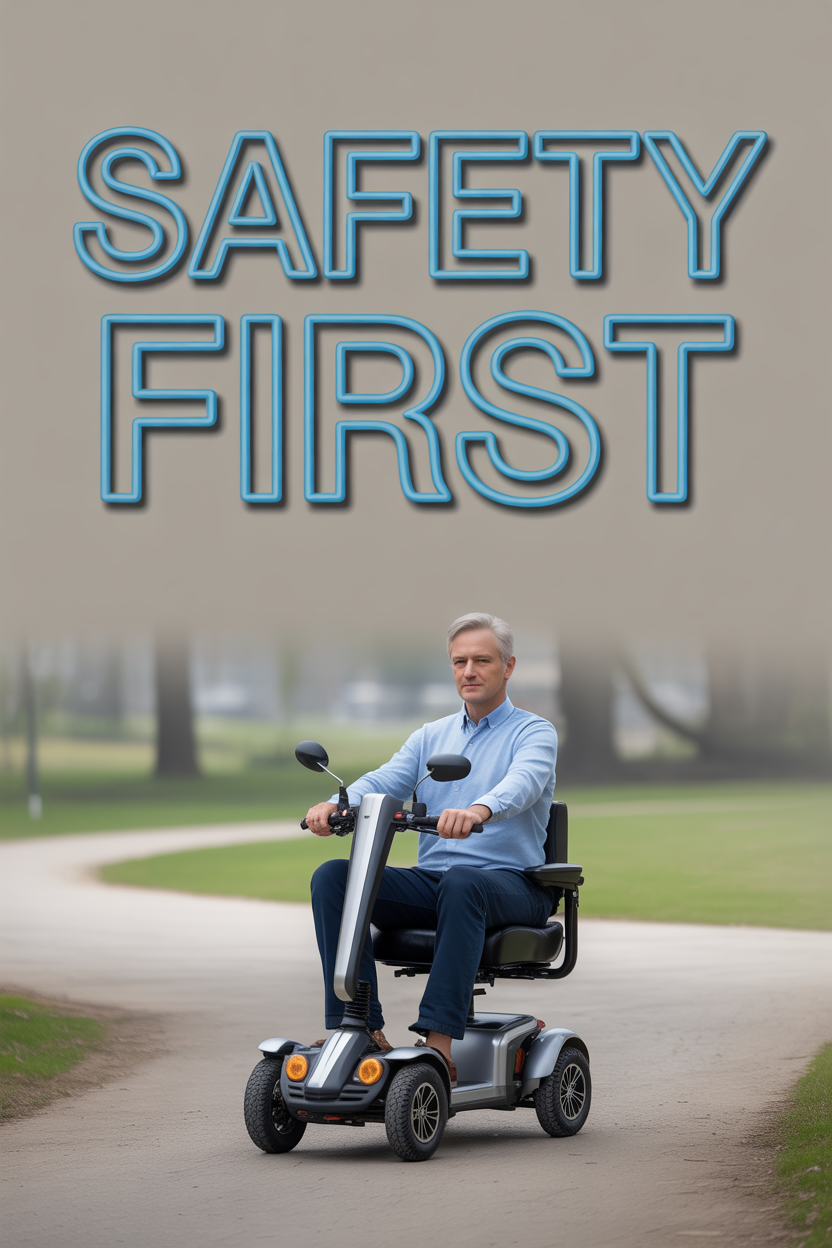
Anti-tip wheels should be standard equipment, like seat belts in cars. These small devices prevent backward tipping on inclines or during sudden stops.
They’re simple, effective safety features that could save you from very unpleasant encounters with gravity and potential injury.
Electromagnetic braking systems automatically engage when you release the throttle, providing smooth, controlled stops. This is much safer than relying solely on manual brakes.
These systems are especially valuable if hand strength or dexterity is a concern, ensuring reliable stopping power every time.
Overall frame reinforcement and build quality determine your scooter’s long-term safety and reliability. Well-constructed bariatric scooters maintain structural integrity over years.
Poorly built models might develop dangerous weaknesses that could leave you stranded or, worse, injured due to component failure.
Look for scooters with robust construction, quality materials, and attention to engineering details. Your safety depends on these factors.
Remember, you’re investing in a device that needs to support you reliably in all conditions for many years.
How Important Are Adjustability and Customization Options?
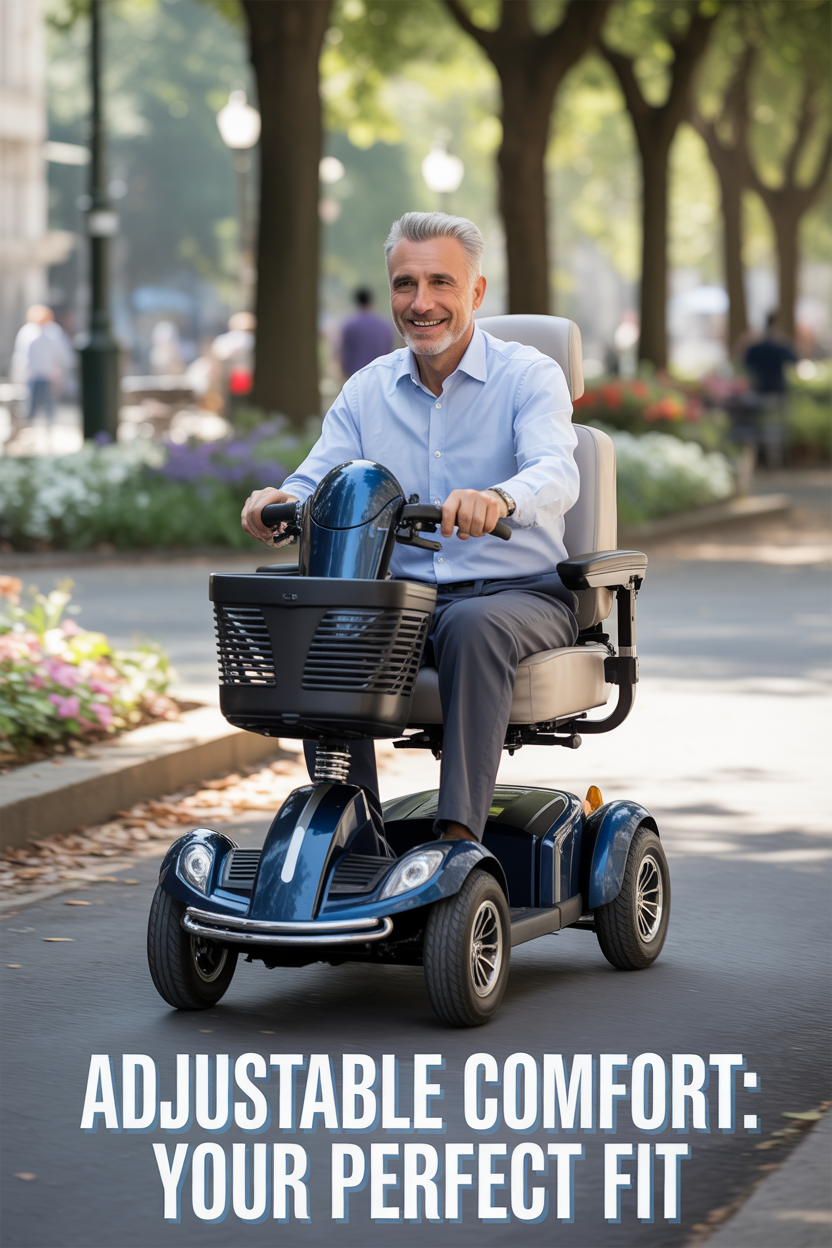
Height-adjustable seats and reclining backrests let you create the perfect riding position for your unique body. Proper positioning reduces strain and maintains good posture.
These adjustments can make the difference between arriving comfortable versus feeling like you’ve wrestled with an uncomfortable chair.
Width-adjustable armrests and angled tillers help you achieve the ideal driving position. If controls are positioned for someone with different proportions, you’ll spend rides stretching uncomfortably.
Adjustable features let you dial everything in perfectly for your specific needs and comfort preferences.
When everything is positioned correctly for your body, longer rides become genuinely enjoyable instead of endurance challenges.
This encourages more frequent use, which helps maintain your independence and keeps you active in your community.
Consider which adjustments are most important for your specific physical needs. Prioritize features that address your particular comfort requirements.
Remember, your scooter should work with your body, not against it. Proper fit is essential for both comfort and safety.
What Weather Protection and Convenience Features Should I Consider?
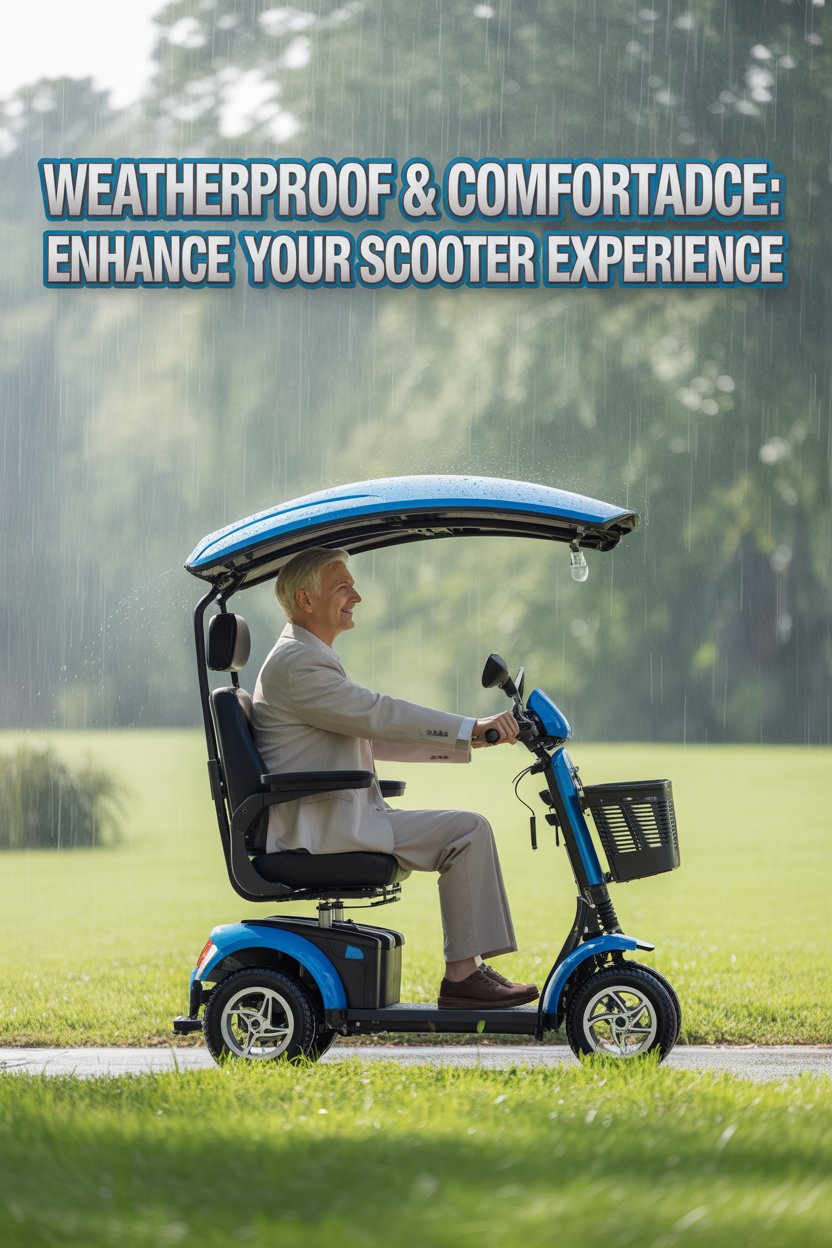
Weather protection accessories make your scooter work in all seasons instead of just fair weather. Canopies provide shade and light rain protection.
Windshields reduce wind resistance and protect you from flying debris. Full rain enclosures let you venture out even during dramatic weather.
These accessories greatly expand your mobility options, ensuring weather doesn’t confine you to indoor spaces unnecessarily.
Convenience features like USB ports, cup holders, and Bluetooth speakers enhance your riding experience significantly. Being able to charge devices, keep drinks handy, or enjoy music makes every trip more pleasant.
Think about how you plan to use your scooter and choose accessories that support your lifestyle. If you live where rain is frequent, weather protection becomes essential.
If you’re planning extended adventures, comfort and entertainment features become valuable companions for your journeys.
Storage solutions like baskets, bags, and compartments add practical value. Consider your typical cargo needs when selecting storage options.
The goal is creating a mobility solution that fits seamlessly into your daily life and supports your independence completely.
How Can I Shop Smart and Make the Best Final Decision?

Don’t limit yourself to scooters specifically labeled “bariatric.” Many heavy-duty, full-size, and all-terrain models offer all necessary features without specialized marketing.
Sometimes you’ll find better deals on equally capable models that aren’t marketed specifically to the bariatric community.
Focus on actual features rather than marketing categories. Weight capacity, seat size, motor power, and build quality matter more than labels.
Compare models across different categories to find the best combination of features for your needs and budget.
Consider your primary usage environment when making your final choice. Indoor use prioritizes maneuverability, while outdoor adventures require power and weather resistance.
Be honest about your specific physical needs and comfort requirements. Don’t compromise on features important for your health and safety.
Balance features, budget, and long-term durability to make the best investment in your freedom. Quality bariatric mobility scooters should serve you faithfully for many years.
Remember, this investment in your mobility is really an investment in your independence, quality of life, and freedom to live on your own terms.

